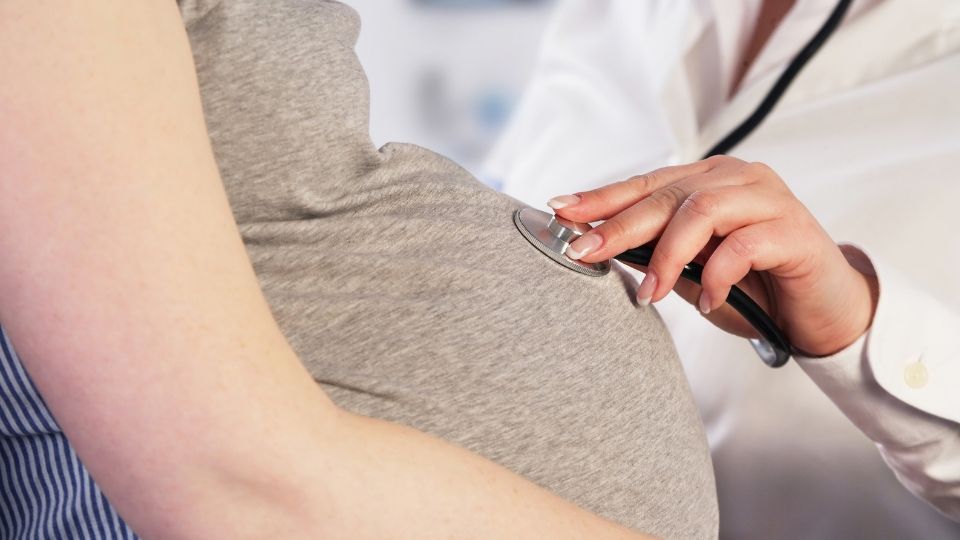Many women who have been diagnosed with preeclampsia didn’t even know the disorder existed or even how to pronounce it. Unfortunately, the rate of preeclampsia has increased by 25% in the last two decades and the condition remains the leading cause of death and illness for mothers and infants.
Preeclampsia is a condition that occurs only during human pregnancy, according to the American Pregnancy Association. It is a rapidly progressive condition characterized by high blood pressure and high amount of protein in the urine.
Preeclampsia is different from eclampsia, which is a more serious complication of preeclampsia that can cause seizures during pregnancy or in the post-partum period. Though eclampsia is rare in most developed countries, it can result in coma, brain damage or death if left untreated.
Preeclampsia Symptoms
Most of the common symptoms of preeclampsia show up after week 20 of pregnancy, but the condition is often foreshadowed by gestational hypertension or high blood pressure during pregnancy. It’s important to note that having high blood pressure during pregnancy does not necessarily mean you’ll develop preeclampsia, you may simply have Pregnancy Induced Hypertension or PIH.
The main preeclampsia symptoms you should look out for are a new onset of headaches, nausea, and vomiting, confusion, abdominal pain, shortness of breath or burning behind the sternum, a heightened state of anxiety, and/or visual problems like blurred vision, sensitivity to light, or seeing flashing spots.
Preeclampsia can also decrease the number of blood platelets and create issues with the kidneys or liver. Fluid in the lungs and seizures or visual disturbances are also more severe signs of preeclampsia.
Now before you start getting worried, many doctors are specially trained to catch symptoms early to help minimize any complications of preeclampsia.
Catching Early Symptoms
What’s most important to understand about this condition is how subtle the presentation can be. Many women have symptoms present such as mild high blood pressure, may spill a small amount of protein in their urine, or may not experience symptoms at all.
We spoke with Katie Neely, a nurse practitioner at Walnut Hill, about how to identify the early signs of preeclampsia.
“As a nurse practitioner, this diagnosis is what I deal with the most,” Neely says. “Diagnosis of the disease can be difficult because many symptoms of pregnancy are also the same as preeclampsia, such as nausea and headaches. However, the main difference between normal pregnancy symptoms and preeclampsia is that a patient may have multiple symptoms that will continue to worsen.”
Having an experienced staff can make all the difference when preeclampsia.
“We have many years of experience here at Walnut Hill that have prepared us all on how to use assessment skills that have been particularly tailored to catching those patients with PIH before any adverse outcomes can occur,” Neely says.
“PIH is not something that every patient needs to have anxiety over,” Neely says. On the other hand, communication is key in diagnosis and management of PIH. As long as patients are communicating throughout pregnancy regarding concerns or questions, we as providers will be able to provide the best care.”

Preeclampsia Diagnosis Tests
In order to determine if you have preeclampsia, your physician may do a series of tests. If symptoms or an exam shows risks for PIH, your doctor will have various tests that will help diagnosis and manage your symptoms.
- Blood tests – These tests include liver and kidney function tests and platelet counts.
- Urine analysis – Your doctor may also want to measure the amount of protein in your urine to help make a diagnosis.
- Fetal ultrasound or biophysical profile – The close monitoring of your baby’s growth through ultrasound will help your doctor to track fetal weight and the amount of fluid in the uterus. An ultrasound can also be used for a biophysical profile that measures your baby’s breathing, movement, and muscle tone within the uterus.
- Nonstress test– A nonstress test is a simple procedure that checks how your baby’s heart rate reacts when your baby moves.
Risk Factors
Some women have a higher risk for developing the condition, according to the Preeclampsia Foundation. These risk factors include:
- A previous history of preeclampsia
- Multiple gestation (i.e., being pregnant with more than one baby)
- A history of chronic high blood pressure, diabetes, kidney disease, or organ transplant
- Being pregnant for the first time
- Obesity, particularly with a body mass index (BMI) of 30 or greater
- A family history of preeclampsia (i.e., a mother, sister, grandmother, or aunt had the disorder)
- Polycystic ovarian syndrome
- Lupus or another autoimmune disorders, including rheumatoid arthritis, sarcoidosis, and multiple sclerosis
- In-vitro fertilization
- Sickle cell disease
- Being of African-American decent
Can Preeclampsia Be Prevented?
Many patients first questions are if PIH can be prevented. Unfortunately, this is a condition that is not preventable. “For patients that are at high risk for developing PIH, research has found ways to help reduce the risk,” Neely says. “This includes taking a baby aspirin daily from 12 weeks until 36 weeks of pregnancy.”
What Are the Treatments For Preeclampsia?
Truthfully, the only cure for preeclampsia is delivery of the baby as well as the placenta. In most situations, if vaginal delivery is possible and all conditions are favorable for a safe delivery, the best management goal is to get the baby as close to term (or 37 weeks) as possible, without putting the mother at risk for adverse outcomes, and deliver the baby.
Although various methods to help reduce the risk of complications between the mother and baby have been shown to be effective, they do not slow the progression or worsening of the disease. Doctors may recommend medications that can be used to lower blood pressure.
With appropriate management and good teamwork between the providers and the patient, most patients with PIH go on to deliver healthy babies. For those with more severe cases, the providers at Walnut Hill and the staff at Presbyterian Hospital have the knowledge and capacity to continue to give high quality care for both mom and baby.
Recovering Post-Delivery
After delivery, you should check with your doctors about taking pain relievers that fall under the NSAIDs family, such as ibuprofen and naproxen sodium, which can increase your blood pressure.
Women who experienced preeclampsia are four times more likely to develop post-traumatic stress disorder and have three to four times the risk of high blood pressure.
Discovering that you may have preeclampsia and serious complications can be scary, especially if you are diagnosed late in your pregnancy. But try not to add additional stress with too much worrying. Let our doctors, who are specialists in diagnosis and treatment of serious conditions, give you the best care. Book your appointment with us today.

